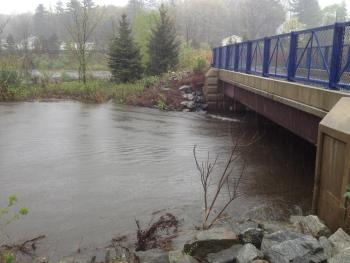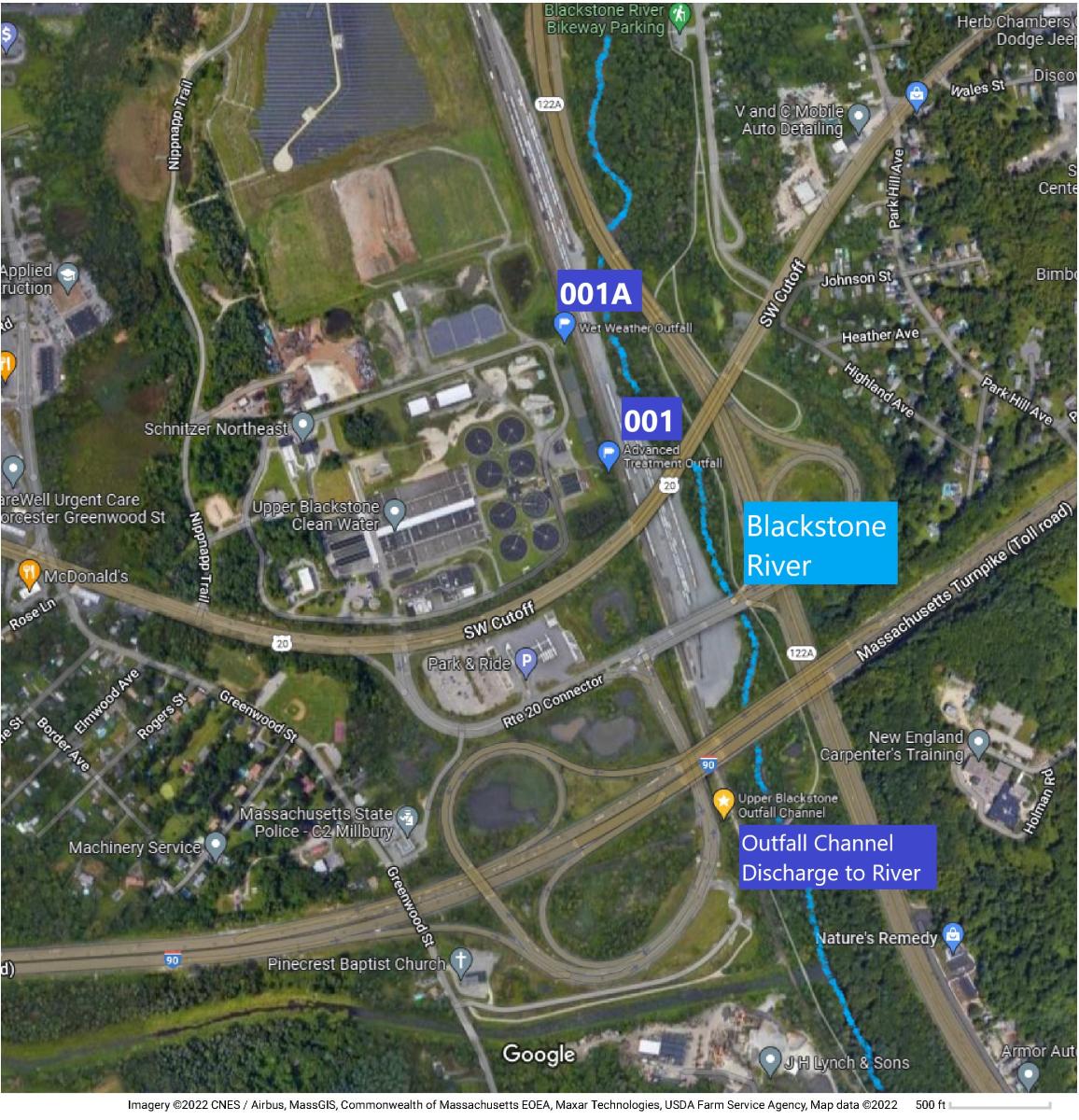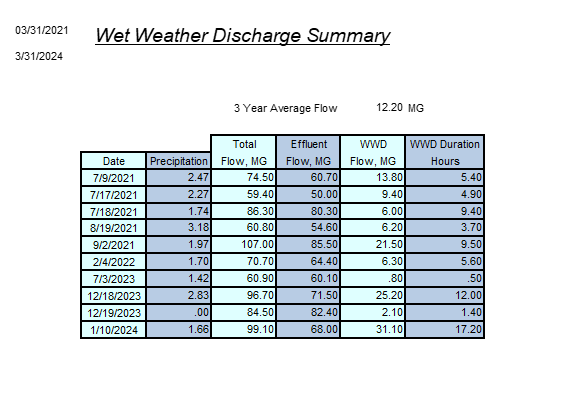Wet Weather Blending
What is Wet Weather Blending?
Why is Blending a Necessary Option?
Upper Blackstone Clean Water discharges blended wastewater from its facility during extreme wet weather events such as heavy rainfall or rainfall combined with snowmelt. Upper Blackstone receives wastewater flow from combined sewer systems where stormwater at times flows into the same pipes that transport sewage. Under extreme conditions, a portion of the flow at the treatment facility is intentionally diverted around biological treatment units and then recombined following disinfection. This approach is a measure to minimize and mitigate water quality impacts of discharges of combined sewer overflows, and to prevent adverse impacts to the biological treatment facilities. For the purposes of 314 CMR 16.00, blended wastewater is considered to be a type of partially treated wastewater.
Upper Blackstone is required by DEP to issue a public advisory notification for "any discharge of partially treated wastewater, including blended wastewater." When Upper Blackstone implements blending, it is for the purpose of protecting the river and the treatment process from a washout of biological solids which would both violate TSS (solids) permit requirements, and upset the process such that the facility would not be able to provide adequate treatment until the treatment organisms that were washed out are regrown. Restoring the biology is a process that could take weeks or months depending on the time of year. The location of the advanced treatment outfall, 001, and the wet weather discharge outfall, 001A, are shown on the adjacent map. The outfalls are also illustrated on the process flow diagram. Effluent from the treatment plant reaches the river via an outfall channel that connects with the Blackstone River about 2000 feet downstream of the plant site, near the bikeway bridge.

All wastewater treated at Upper Blackstone is disinfected and dechlorinated prior to discharge. Both composite and grab samples are collected every day at the facility, with more frequent grab sampling at least every 3 hours during blending. Data from samples taken during blending events is provided at the bottom of this page. No blending events have occurred at Upper Blackstone when the disinfection and dechlorination systems were not operating for the reduction of pathogens. The effluent from the facility historically meets NPDES permit requirements that were established based on water quality standards. Additional notification would be conducted in the event of any failure of any of the treatment processes that could contribute to downstream public health impacts.
Subscribers to blending notifications will receive email notifications as required by 314 CMR 16.00, including a notification within 2 hours of the start of blending, and every 8 hours thereafter until the event is concluded. This website will be updated no later than the next business day after the initial Public Advisory Notification. Mass DEP also publishes this data at the Energy & Environmental Affairs Data Portal.
Outfall Location Map
Google Map Near Upper Blackstone
Any significant rainfall event will result in increased stormwater runoff pollution from point and non-point sources. These pollutants include trash, sediment and oils from parking lots and roadways, pathogens from animal waste, and nutrient fertilizer from lawns or golf courses. DEP advises that the public, "avoid contact with these waters for 48 hours after the discharge ceases due to increased health risks from bacteria and other pollutants."
Blended Wastewater Water Quality Data


